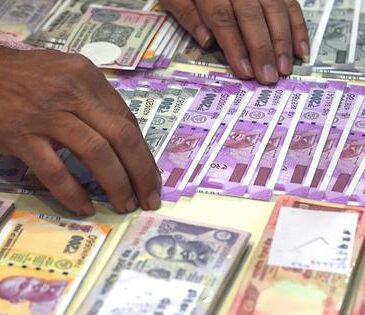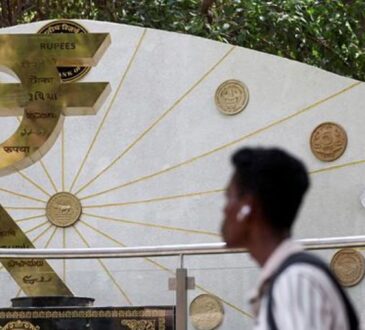Share this article
A decade ago, “money” likely meant whatever sat in your wallet or bank account. Today, it might also include a token in a cryptocurrency wallet, a balance in a fintech app, or a line of code in a smart contract. The definition of currency is expanding rapidly, driven not by central banks, but by technology.
This shift isn’t just moving from cash to digital. It’s reimagining trust, value assignment, and control of exchange systems. In this landscape, traditional fiat currencies and decentralized digital assets coexist and sometimes collide.
The digitalization of fiat: where the shift began
Fiat currency transformation didn’t start with crypto; it began quietly as banks and payment systems adapted to a connected world. In the 1990s, financial institutions digitized operations, replacing physical ledgers with electronic databases, enabling basic online banking. By the early 2000s, real-time gross settlement systems and interbank transfer protocols allowed faster, more efficient money movement, still within traditional financial frameworks. The rise of e-commerce accelerated these changes, pushing banks and payment providers to develop more user-friendly digital tools.
Open banking regulations and APIs unlocked financial infrastructure access for third parties. It wasn’t just banks controlling money’s flow; tech companies and fintech startups could plug into the system, offering digital wallets, peer-to-peer transfers, and embedded finance. A slow-moving sector began evolving at software’s pace.
Cryptocurrencies and Web3: rethinking what holds value
Cryptocurrencies emerged in response to a growing mistrust in traditional financial systems, most notably in the wake of the 2008 financial crisis. Bitcoin, the first cryptocurrency, aimed to bypass centralized institutions. It introduced a radical idea: value stored and transferred securely without relying on banks, governments, or intermediaries. Unlike fiat currency, issued and regulated by central authorities, cryptocurrencies are decentralized, run on blockchain networks. No central bank sets policy, no gatekeeper approves transactions. Consensus mechanisms and cryptographic algorithms validate transfers. This shift isn’t just technical – it’s philosophical. It challenges long-held assumptions about who gets to define, issue, and control money.
As blockchain ecosystems evolved, new digital assets followed. Ethereum brought programmability to money via smart contracts, enabling complex use cases like decentralized finance (DeFi), tokenized assets, and NFTs. These innovations reframed value as something functional, fractional, and fluid, extending far beyond traditional currencies. Today, value might reside in a stablecoin pegged to the dollar, a governance token representing voting power in a decentralized protocol, or a digital collectible that carries utility in a virtual world. In this new context, “money” is no longer just a medium of exchange – it’s a digital construct shaped by community, utility, and code. To better understand how fiat and crypto fundamentally differ – and how they might converge – explore this guide on fiat currency vs cryptocurrency.
Programmable money: currency with built-in logic
One of the most transformative developments in currency’s evolution is the rise of programmable money – digital assets with built-in logic. Thanks to blockchain-based smart contracts, money can now move conditionally, automatically, and without intermediaries. No longer just a passive store of value, money becomes active and responsive. A smart contract can release funds when pre-defined conditions are met—no human intervention needed. This has profound implications for insurance payouts, royalty distributions, automated payroll, and escrow services, enabling self-executing agreements that reduce costs, delays, and trust-based risk.
This functionality is key to decentralized finance (DeFi), where lending, borrowing, trading, and saving use algorithms, not institutions. It’s also increasingly relevant to traditional actors, seeing potential in combining automation with regulatory oversight. Hybrid models emerge here. Instead of an either-or scenario between fiat and crypto, we see convergence: regulated financial entities exploring blockchain solutions, and Web3 innovators integrating fiat on- and off-ramps. This meeting point is what many now refer to as Web 2.5 – a transitional phase where traditional financial systems and decentralized technologies begin to interoperate. Programmable money makes this possible, allowing assets to move seamlessly across systems, adapting to user needs—fiat speed and stability, or crypto flexibility and autonomy. In this emerging landscape, money isn’t just data. It’s logic, governance, and connectivity rolled into one.
The future of money is a continuum
Technology isn’t replacing currency – it’s reshaping its context. In the years ahead, we’ll likely see a financial landscape where dollars, tokens, and smart assets all serve specific purposes, interoperating through programmable layers. As we move toward a more interconnected system, money is clearly no longer fixed. It’s evolving into something more fluid, dynamic, and deeply integrated into our digital environments. The only question that remains: are we ready to update our definition of what money truly is?
Share this article




